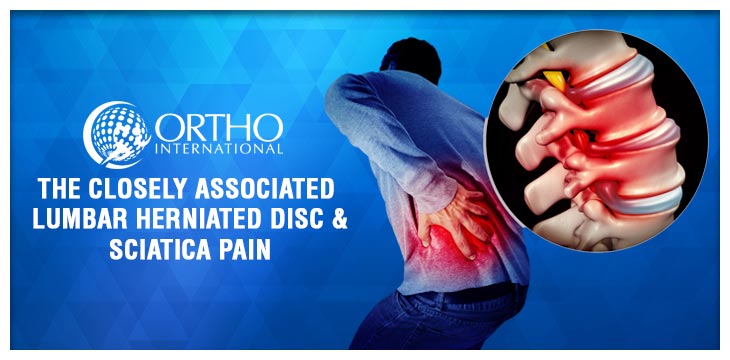Men have approximately twice the risk for lumbar herniated discs when matched with women. Especially those engrossed in physically demanding work requires heavy lifting and other physical labor and they are more prone or at a greater risk of developing a lumbar herniated disc.
What Is Sciatica Pain And How It Flares Up?
A herniated lumbar disc when presses on the nerves in the spine generate pain, numbness, tingling or weakness of the leg ends up as ‘sciatica.’ Sciatica hits about 1-2% of all population normally between the ages of 30 and 50.
Talking about the sciatic nerve, it begins as a bundle of nerve fibers in the lumbar region of the spine and these nerve fibers, or roots, leave the spinal canal through openings in the bones called the foramen at each level of the lumbar spine. These nerve roots then join collectively to form one large nerve called the sciatic nerve.
When observed it has been deduced that the cases of sciatica are because of an underlying lower back condition, which ends in the inflammation or compression of one or more of sciatic nerve roots. The sciatica symptoms generally flare-up as the gel-like interior inside the lumbar disc which contains inflammatory proteins generally leak out and finally aggravate the sciatic nerve roots.
Treatment For Sciatica
Non steroidal anti-inflammatory medications (NSAIDs) are analgesics are useful for reducing swelling and inflammation that occur as a result of disc herniation. These include aspirin, ibuprofen, naproxen and a variety of prescription drugs. When the doctor prescribes the anti-inflammatory medications, there are many side effects like stomach upset or bleeding which pops out. Chronic use of prescription or over-the-counter NSAIDs should be monitored by the physician for the development of any potential problems.
The treatment alternatives for sciatica because of a lumbar herniated disc which can help you find relief from the sciatica symptoms produced by a lumbar herniated disc include walking.
The sciatica symptoms might imply otherwise, but a low-impact aerobic activity like walking is better for sciatica than taking rest. Walking can relieve the sciatic pain in part by stimulating the release of pain-fighting endorphins into the system.
The heat therapy: Heat therapy excites the sensory receptors in the skin and by applying this heat to the lower back it hinders the transmission of the pain signals to the brain. An excellent choice for applying heat therapy is to lie on an electric heating pad for 15-20 minute.
About The Lumbar Region & It’s Significance
The lumbar region of the spine, generally referred as the lower back, is composed of five vertebrae, and within each vertebra are spinal discs. These discs cushion the joints the spine and contribute the much-needed assistance.
Each of the discs is built up of a strong outer ring also termed as the annulus which contains the nucleus pulposus, or a gel-like interior. The lumbar spine adds a notable amount of weight and is constantly in motion, and this can create the outer ring of one of the discs to bulge, crack, or tear. This, in turn, enables the gel-like interior to herniate or eject through the outer ring ultimately ending up in sciatica pain as seen in many of the cases.
Reference
The most notable sign of sciatica is pain that radiates from your lower back into the back or side of the legs. It can range from a mild ache to sharp, grinding pain. If you are noticing any kind of numbness, tingling, and weakness in the leg or foot meet Dr Abhishek Mishra for the best spine surgery treatment in Delhi.
